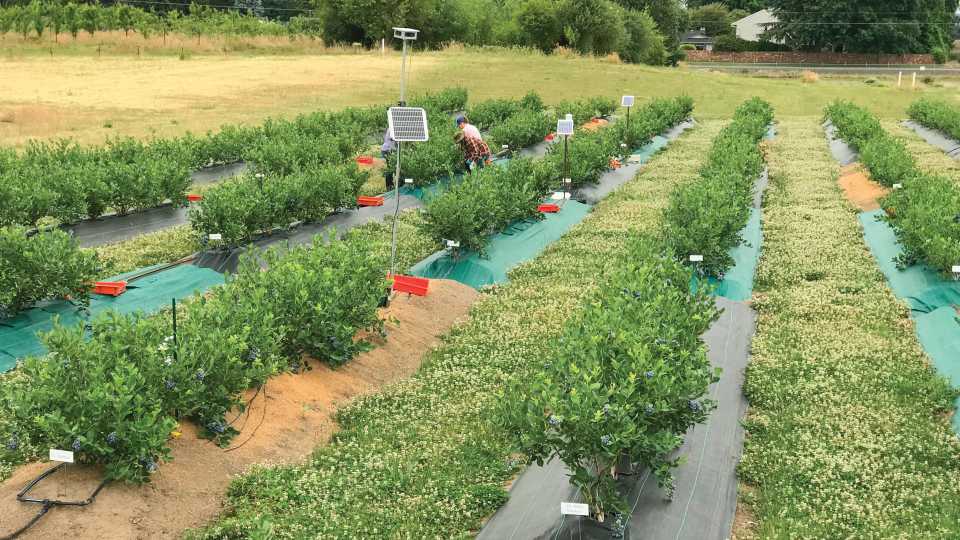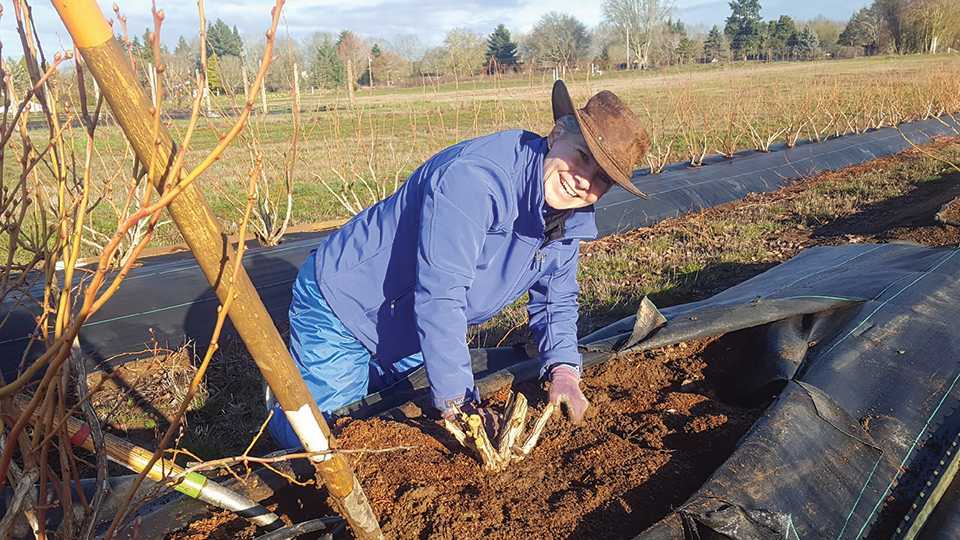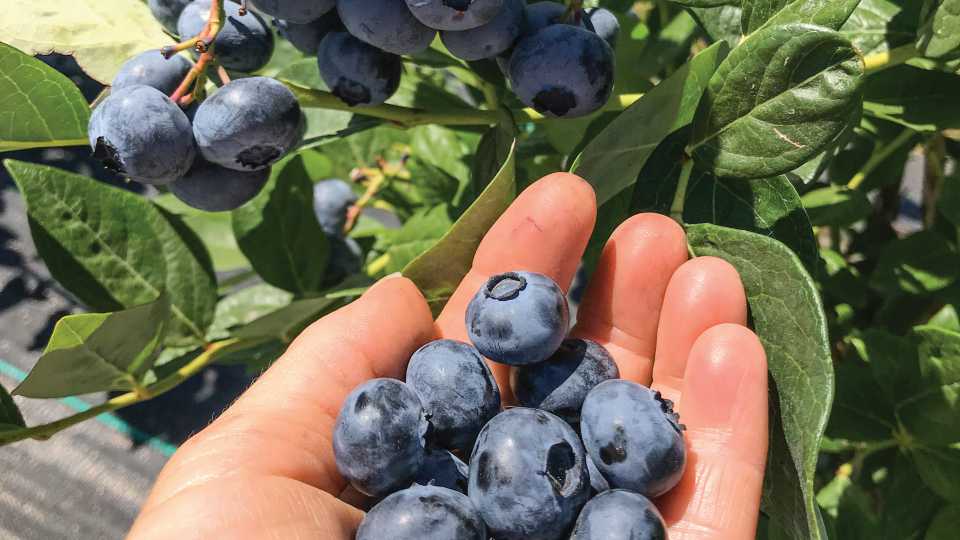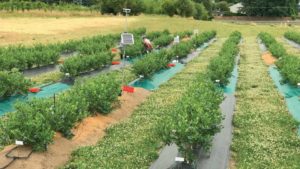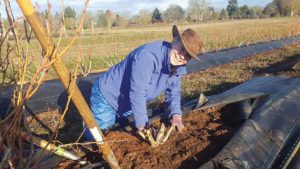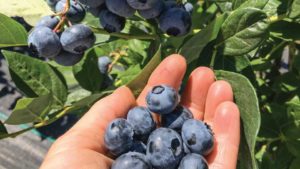Why Weed Mats Make Sense for Organic Blueberries
Oregon is a good place to work for those interested in berries. The state’s berry crop industry includes about 24,000 acres harvested for a farm gate value of more than $200 million. It led the U.S. in volume of harvested blueberries for the first time in 2018.
Oregon State University’s (OSU) research is helping growers more successfully produce blueberries, so they’re happy to fund it. Dr. Bernadine Strik and her team recently completed a 10-year study of the best ways to grow organic blueberries, the only certified organic blueberry research trial of which she’s aware.
“I started the research trial because the industry asked me to,” Strik says. “At the time, in 2006, there was so little organic production; it was only 2% of the industry. They had the foresight to see they could invest in research and get some useful information.”
Determining Best Practices
Ten years ago, many blueberry farms were planted on flat ground using sawdust as a mulch and fertilizing with a relatively high rate of fish-soluble products, and often with nitrogen-rich compost. But her research uncovered new best practices.
She and her team conducted research on a newly established, one-acre block at OSU’s North Willamette Research and Extension Center, using ‘Duke’ and ‘Liberty,’ two cultivars commonly grown throughout the Northern U.S.
Over the course of the study, she found it beneficial for growers to use raised beds, change fertilizer products, and cut back on nitrogen rates. She also experimented with different mulching methods, including a combination of municipal yard debris compost and sawdust, the industry standard of just sawdust, and weed mat — a porous, woven polyethylene ground cover.
“When we started this study, there was very little weed mat used by growers in the U.S. because it adds a lot to the establishment cost of a field in its first year,” Strik says.
Huge Economic Difference
Weed mat also has to be replaced every five years or so, but it still proved the best solution. When compared with the cost of controlling weeds in organics using the compost and sawdust combination, weed mat is four times less expensive, considering materials, installation and replacement. Weed mat also increased cumulative yield by 8% to 20% over 10 years.
“That was a huge economic difference,” Strik says. “The cost of weed control would be even more in a climate where it rains in the summer. We were like, ‘Wow, this is the clear choice to control weeds in organics!’ It’s the key reason growers jumped on it so quickly.”
Due to the research, growers made a shift from planting less than 5% of new conventional and organic fields with weed mat to 75%.
However, weed mat use is not without its disadvantages. Voles, or field mice, like to hide under the weed mat from predators like hawks and owls, potentially damaging plant roots. The black weed mat material also leads to higher soil temperatures with larger top growth, requiring plots to consume 30% to 50% more irrigation water than sawdust treatments. This is a critical issue for growers with limited access to water. The higher temperatures also broke down the organic matter in the soil on which blueberries thrive.
But realizing that soil organic matter had also decreased with weed mat in other tree fruit studies, Strik had the foresight to plant the guard rows in the trial placing a layer of sawdust under the weed mat. After the end of the study, the growth and yield of these mulched plants looked really good.
Looking at Weed Mats Again
Strik sought funding for a new trial comparing various weed mat mulching options in conventional production to see if she could repeat the positive results. In October 2016, she began her next trial, funded by the Oregon Blueberry Commission.
This time she used a third of an acre of only ‘Duke’ cultivars in conventionally managed drip irrigated and fertilized beds. She used five treatments to see how sawdust and weed mat color affected blueberry plant establishment and early yields — sawdust as the control, black weed mat, green weed mat, and both weed mat colors each with sawdust underneath.
In 2018, the second growing season, the plants produced fruit for the first time. Yield ranged from 1.4 to 1.9 pounds per plant, depending on mulch treatment.
“What’s really interesting is we were able to repeat results from the organic trial,” she says.
Adding Sawdust
The black weed mat mulch, by itself, led to the hottest soil temperature and smallest root systems, while the black weed mat with the sawdust underneath produced plants with the biggest root systems and canopies, and increased yield by 30%.
Placing sawdust under the weed mats of either color also seems to help reduce vole presence. “I think they don’t like it falling into their tunnels or something,” Strik says.
“Sawdust seems to insulate the soil from heat,” Strik says. “I expect that as the canopies get larger, the additional shade will also affect soil temperature.”
Just as in the first trial, Strik hasn’t seen any negative effects of the different mulches on fruit firmness, sugar content, berry size, or season. She’ll continue to study the effects of the mulches on nutrient uptake, plant growth, and yield.
Using drone technology, they measured the warmest canopy temperatures with black weed mat mulch. Strik will work with fellow OSU Professor, Vaughn Walton, to model the impacts of mat color on canopy temperature and even spotted wing drosophila (SWD).
“He’s already found having a whole field with black weed mat decreases the population of SWD because they don’t like the low humidity heat that occurs with weed mat compared to sawdust. Also, the hot weed mat can kill larvae or pupae.”
Strik says her research has applications across the country, though the results might be slightly different depending on the region. She has colleagues performing similar trials in other areas, such as Georgia. But overall, she does recommend using weed mat.
“In general, for reducing the need for using conventional herbicides, or for organic growers, weed mat is a no-brainer,” she says. “But there are negative effects. For long-term sustainable yield and soil health, I would highly encourage placing mulch under the weed mat to prevent the breakdown of organic matter and control temperature, and possibly also pests.”
Since starting the first study in 2006, Oregon and Washington’s berry industries have grown from providing 2% of U.S. organic blueberries to 60%.
“We’re doing research that’s impactful to the industry — conventional as well as organic,” Strik says. “Because growers were financially involved in the study, and helped develop treatments, they took the information and ran with it. ”





